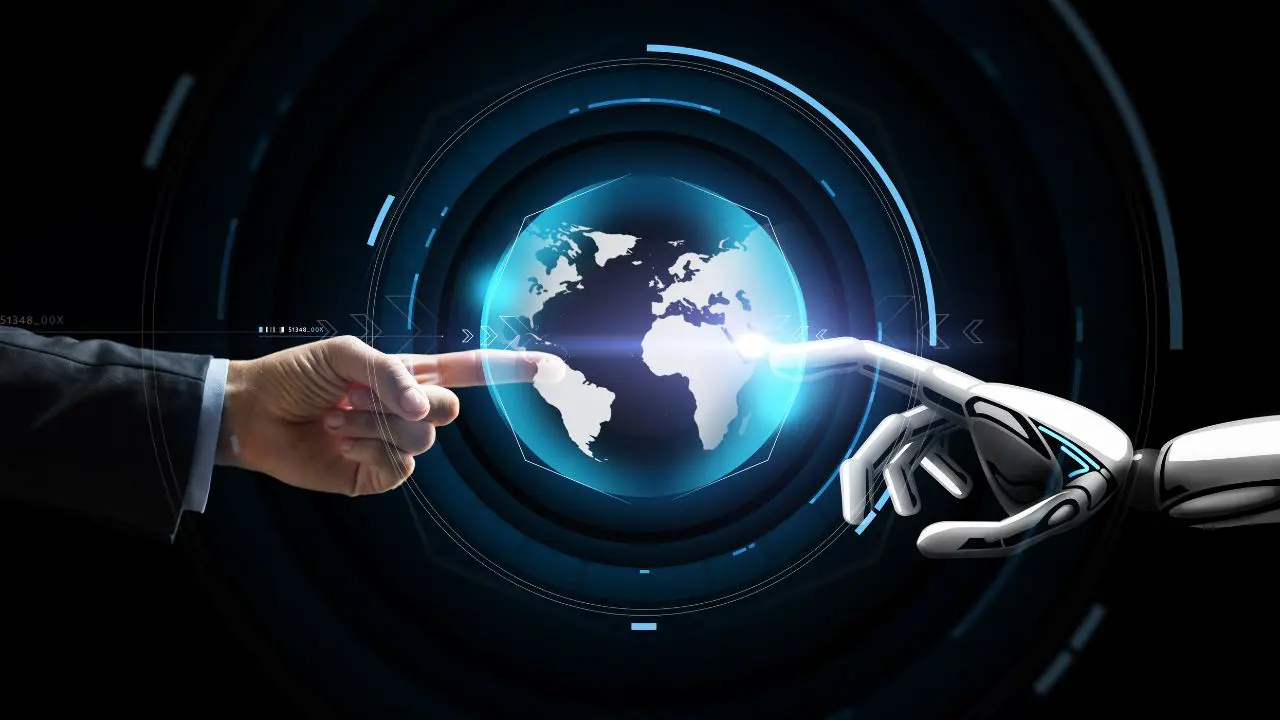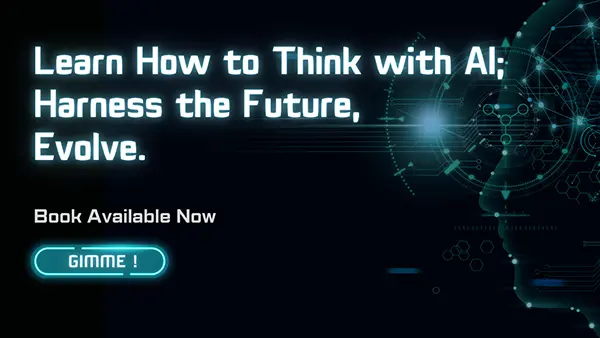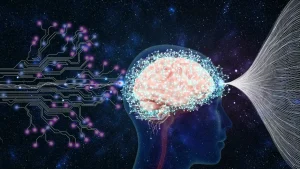"In the realm of problem-solving, thinking with AI allows us to tackle complexities that would be beyond either human or artificial intelligence alone."
- How to Think with AI (book out now) Tweet
Not just a prediction—this statement represents the paradigm shift that’s already unfolding. As we stand at the intersection of human ingenuity and artificial intelligence, we’re witnessing the birth of a new problem-solving methodology that is already redefining the limits of what’s possible.
The Myth of AI Supremacy (and Human Obsolescence)
Let’s start by shattering a pervasive myth: the idea that AI will eventually outstrip human intelligence in all domains, rendering us obsolete. This narrative, popular in both techno-utopian and dystopian circles, fundamentally misunderstands both human and artificial intelligence.
The truth is far more interesting: human and artificial intelligence are complementary, not competitive. Each has unique strengths that, when combined, create a problem-solving powerhouse greater than the sum of its parts.
The Symbiotic Advantage
What makes human-AI collaboration so powerful? Let’s break it down:
- Intuition Meets Data: Humans excel at intuitive leaps and out-of-the-box thinking. AI excels at processing vast amounts of data and identifying patterns. Together, they can generate and test hypotheses at unprecedented speeds.
- Creativity and Computation: Human creativity can conceive novel solutions, while AI can rapidly iterate and optimize these ideas across countless variations.
- Ethical Reasoning and Logical Consistency: Humans bring nuanced ethical considerations and real-world context to problem-solving. AI ensures logical consistency and can model complex consequences of different choices.
- Adaptability and Specialization: Humans are generalists, able to adapt to new situations quickly. AI can become hyper-specialized in specific domains. Together, they can tackle problems that require both breadth and depth of knowledge.
Redefining ‘Unsolvable’ Problems
This symbiosis isn’t just incrementally better—it’s exponentially more powerful. It allows us to approach problems that were previously considered unsolvable:
- Climate Modeling: Combining human understanding of complex systems with AI’s data-crunching abilities to create more accurate climate models and innovative solutions.
- Drug Discovery: Human researchers working with AI to explore chemical spaces too vast for traditional methods, potentially revolutionizing medicine.
- Urban Planning: Balancing human needs and values with AI-optimized resource allocation and traffic flow models to create smarter, more livable cities.
- Conflict Resolution: Using AI to model complex geopolitical scenarios while relying on human empathy and cultural understanding to find novel peaceful solutions.
The Imperative of Integration
Here’s where we need to be iconoclastic: the future doesn’t belong to AI alone, nor to unaugmented human intelligence. It belongs to those who can seamlessly integrate both.
This means we need to radically rethink our approach to:
- Education: We must teach not just subject matter, but how to effectively collaborate with AI. “AI literacy” should be as fundamental as reading and writing.
- Workplace Organization: Future-ready companies will structure themselves around human-AI collaboration, not treat AI as just another tool.
- Research Methodology: Scientific research will increasingly rely on human-AI teams, requiring new protocols and ethical guidelines.
- Governance: Policy-making will need to incorporate AI modeling while retaining human judgment, requiring a new breed of tech-savvy, ethically-grounded leaders.
Ethical Considerations: Navigating the New Landscape
As we embrace this new problem-solving paradigm, we must proactively address:
- Accountability: Who’s responsible for decisions made by human-AI teams?
- Transparency: How do we ensure the reasoning behind solutions is understandable and not hidden in a black box?
- Equity: How do we ensure access to this powerful problem-solving approach is not limited to a privileged few?
- Human Value: How do we ensure that human contributions remain valued in a world of superhuman AI-assisted problem-solving?
Embracing the Symbiosis
So, how do we prepare for this new era of problem-solving?
- Cultivate Collaborative Intelligence: Practice working with AI tools, understanding their strengths and limitations.
- Develop Strong Human Skills: Focus on uniquely human capabilities like creativity, empathy, and ethical reasoning.
- Embrace Continuous Learning: The landscape of AI is evolving rapidly. Stay curious and adaptable.
- Think Bigger: Start approaching problems you once thought unsolvable. The boundaries have shifted.
- Engage in the Conversation: Participate in discussions about the future of human-AI collaboration. Your voice matters in shaping this new frontier.
Conclusion: The Dawn of a New Problem-Solving Era
We stand at the brink of a problem-solving revolution. The challenges we face as a species—from climate change to global health, from resource scarcity to interstellar exploration—demand a level of cognitive firepower that neither humans nor AI can achieve alone.
But together? The possibilities are boundless.
The future of problem-solving isn’t human OR artificial intelligence. It’s human AND artificial intelligence, working in a symbiosis that amplifies the strengths of both. This is more than a technological shift—it’s an evolutionary leap in our capacity to understand and shape our world.
Are you ready to be part of this revolution? The world’s most complex problems are waiting. Let’s solve them together—humans and AI, in powerful collaboration.





